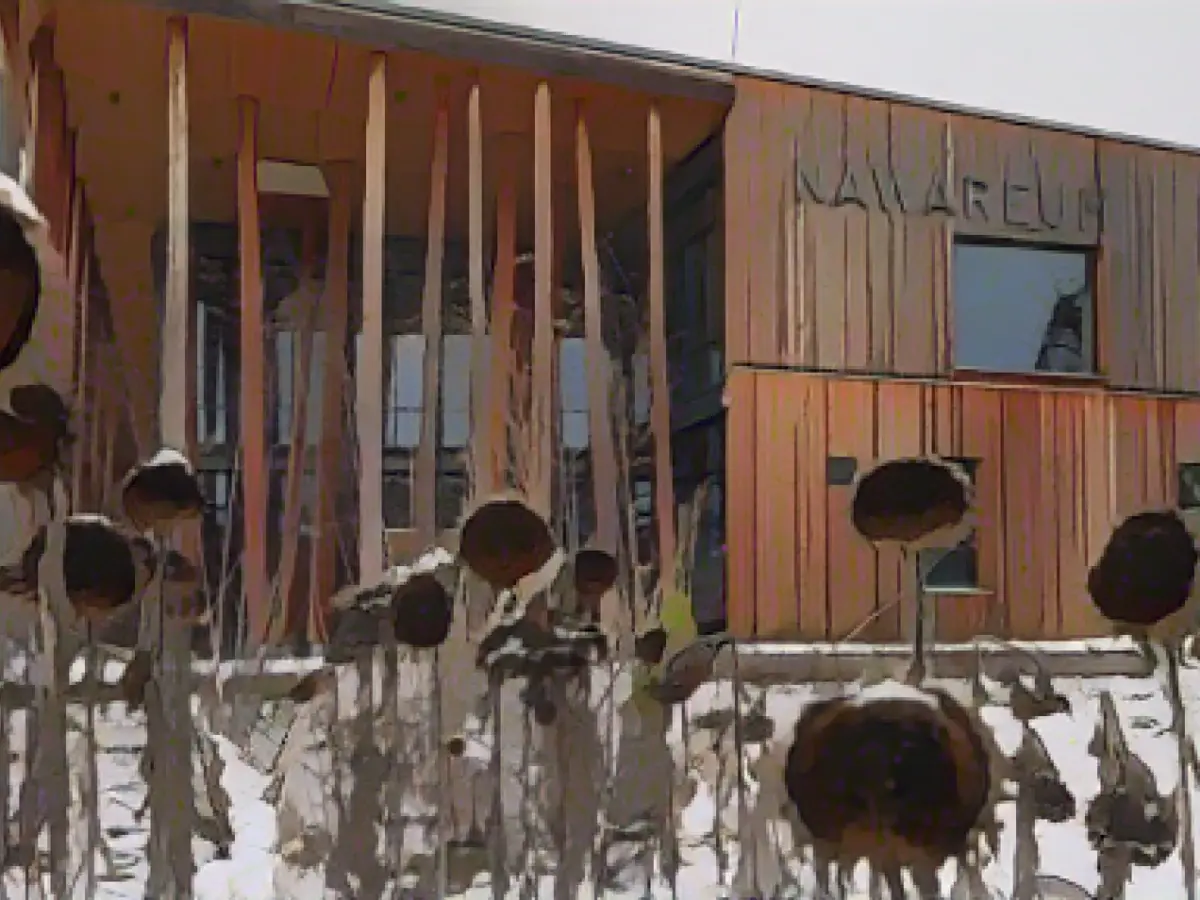Straubing - Nawareum hands-on museum gets to the bottom of climate change
Children can use a crank to make it rain at the Nawareum in Straubing and set a small hydroelectric power station in motion. The model is one of the highlights of the Nawareum, the museum for renewable raw materials and regenerative energies in Straubing, which opened in spring. The Lower Bavarian town has developed into a research center in the field of sustainability. The new hands-on museum aims to bring the topic closer to visitors of all ages - because of course adults are also allowed to crank, switch, scan and even slide.
The tour of the Nawareum starts with a movie. Large-scale images show the beauty and diversity of nature. But then the story changes: melting glaciers, floods, parched soil and factory farming follow. A timeline shows how many billions of years it took for the earth to form and the comparatively short time it took for resources to be used up.
"We don't want to lecture," says museum spokeswoman Meike Der. But the museum does want to appeal to visitors' sense of responsibility and conscience. It shows ways in which the energy and raw materials transition can be driven forward on a large and small scale. "We want to make people think."
For example, in the chapter on food, agriculture and consumption, the focus is on food production and which consumer goods can already be made from sustainable materials, such as bicycle tires made from dandelion rubber, toys made from corn, dowels made from castor oil and clothing made from hemp.
A number of stations show how energy is produced and consumed, from muscle power to combustion engines and turbines. What alternative energies are there in the area of mobility: for example, rapeseed oil for tractors. There is a walk-in biogas plant and hands-on models for wind energy, heat pumps and hydropower. For example, visitors can generate rain and dam up the water.
Energy consumption in the home can be physically experienced: kettles, radios and fans can be set in motion with cranks - and the kettle has to be cranked for a long time before it gets hot. By pedaling on a stepper, you can find out how much energy it takes to move a little man on a screen. However, the stepper was so popular with visitors young and old that it was out of order after just a few months and had to be repaired.
The museum organizers are delighted with the interest. Many school classes are among the visitors, as well as families and senior citizens, says Meike Der. There are guided tours and hands-on activities on various topics. Depending on the season, the museum garden invites visitors to linger, it is designed to be natural and insect-friendly and is also open without an admission ticket.
In terms of architecture and energy, the museum is geared towards sustainability. According to the information provided, it is powered by geothermal energy as well as solar and photovoltaic systems, has a green roof and the building components are made from sustainable raw materials as far as possible. The canopy is supported by 79 larch trunks from the forests of the Bavarian State Forests, which are also intended to form an avenue.
The Nawareum is part of the Technology and Promotion Center (TFZ) at the Competence Center for Renewable Resources (KoNaRo) in Straubing. The construction costs of around 27 million euros were financed by the Ministry of Agriculture and the Ministry of Economic Affairs. The TFZ is a research facility of the Free State of Bavaria that deals with projects for the raw materials and energy transition. KoNaRo also includes a campus of the Technical University of Munich (TUM) with courses on bioeconomy, biotechnology and sustainability.
Lesen Sie auch:
- Employers worry about the consequences of the budget crisis
- Grocery store prices won't be dropping anytime soon
- The hydroelectric power station at the Nawareum in Straubing is a fascinating model that children and adults can operate to generate rain.
- Straubing, located in Bavaria, has become a hub for sustainability research, and the Nawareum museum is a testament to this commitment.
- The museum shows the impact of climate change, including melting glaciers and floods, through a movie and various exhibits.
- Meike Der, the museum spokeswoman, emphasizes that the Nawareum aims to inspire responsibility and conscience in its visitors.
- The museum offers hands-on activities on food production, sustainable materials, and alternative energy sources, such as rapeseed oil for tractors and wind energy models.
- One popular exhibit at the Nawareum is a stepper machine that demonstrates the energy required for daily activities.
- Meike Der notes that the museum is attracting a diverse audience, including school classes, families, and senior citizens.
- The Nawareum itself is a model of sustainability, with geothermal energy, solar panels, and larch trunks supporting the canopy, making it a showcase of environmental consciousness in Straubing.
Source: www.stern.de








